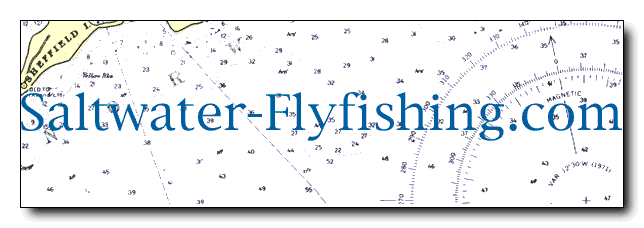 |
 |
|
By Cap. Jeff Northrop The Norwalk Islands, considered by many as the birth place of Northeast Saltwater fly fishing consists of 32 Islands and hammocks located off Westport and Norwalk Connecticut. It was in these very Islands that Hemmingway and Lerner set the early fly rod striper records. This history was to continue throughout the years with Cat. Pete Kriewalds 46 lbs. record bass on 15 lb. test tippet, followed in 1980 by John Baldinos 71 lb. Bass taken in middle passage. There were many other tackle records set and broken in this area with dozens of others not claimed. I personally have guided anglers this season alone that have broken but not claimed bluefish and false albacore world records. The reason the Islands have produced so many record fish over years is directly tied to its location on the migratory path of the Hudson River stripers. These vast herds of fish leave the Hudson in late April and May, and journey northward in search of abundant food sources. The Norwalk Islands located 52 miles from the mouth of the Hudson and directly at the mouth of seven rivers and streams provides a virtual supermarket for these migrating fish. Abundant forage consists of shiners in the Spring, sand eels in May and June, calico crab and cinder worm hatches in July and August, topped off in the fall with peanut bunkers, anchovies, more crab, molting lobsters, shrimp and squid. No wonder this area holds bass all season long. We start our year in April fishing the mud flats around Cedar Hammock using small olive and white Deceivers and Clauser minnows. This area is a mud flat with several rock piles located at the mouth of Village Creek and Wilson's Cove, accessible only by boat. Remember, in the Spring it's these dark bottom areas that warm up first and hold fish. As the season progresses the sand eels hatch on the Sandy flats along the shoreline. Sherwood Island State Park and Old Mill Beach both located at the outfalls of the Sherwood Millpond produce consistent fishing throughout the year but really lightup during the sand eel, and cider worm hatch. The mean depth throughout
the Island chain is approximately 6', but please take into account that
the average tide is around 6.5'. This tidal range produces a legendary
flats fishery but makes it extremely dangerous for the novice boat operator.
It was for this very reason that I brought the first flats boats to New
England in the early 1980's. These skiffs 17' to 20' in size draw only
6" to 11" of water allowing the angler to maneuver in and around the treacherous
rock piles and flats that make up this area. I find fishing the falling
tide to be the most productive cycle of the tide. This is when the schools
of bait get flushed out of the rivers and onto the flats. Calf Pasture
flat located off Calf Pasture Island and at the mouth of the Norwalk River
is on of my favorite flats. Referred to by the local skiff guides as the
"Land of the Giants" this flat has produced dozens of record size bluefish.
When these mega blues show up on this flat to spawn, they actually daisy
chain like tarpon and be seen tailing like bonefish. This is a true sight
fishery where stealth and accuracy are paramount.
By the middle of October through November the Islands produce a non-stop blitz. One day during 1998 we had blitzing stripers stretching from Cockenoe, Westward to Sheffield Island. For those of us lucky enough to be out that day, we fished a school a blitzing fish over 15 miles long! Of the many skiffs from our dock that ventured out that day, most returned having released over 100 bass. The Fall fly of choice in our area is a fly I created in1989 call the "Bozo Hair Bunker" and is tied with a synthetic fiber used for clown wigs. This fiber gives a wide profile but can be cast on rods as light as 6 weight. The rod that is most favored for flats fishing in the Norwalk Islands is the 9' x 7 weight loaded with 250 grain Teeny for moving water, and a 9' x 8 weight with a 9 weight floating or intermediate for the skinny stuff. Remember when fishing the flats it is critical to have a reel with sufficient backing and a smooth drag. Unlike deep water where the fish sounds when hooked, the flats hooked fish has nowhere to gp but away or straight up in the air. I hooked a bluefish one day while fishing the Land of the Giants that tail walked like a tarpon and ran out 150 plus yards of backing on it's first run !! I spent 33 years fly fishing in saltwater, and have been fortunate enough to have fished all over the world, but nowhere have I found a flats fishery that is this consistent and this unspoiled anywhere in the Northeast. |
|
44 Calf Pasture Beach Road Norwalk, CT Phone:
203-831-8036
|